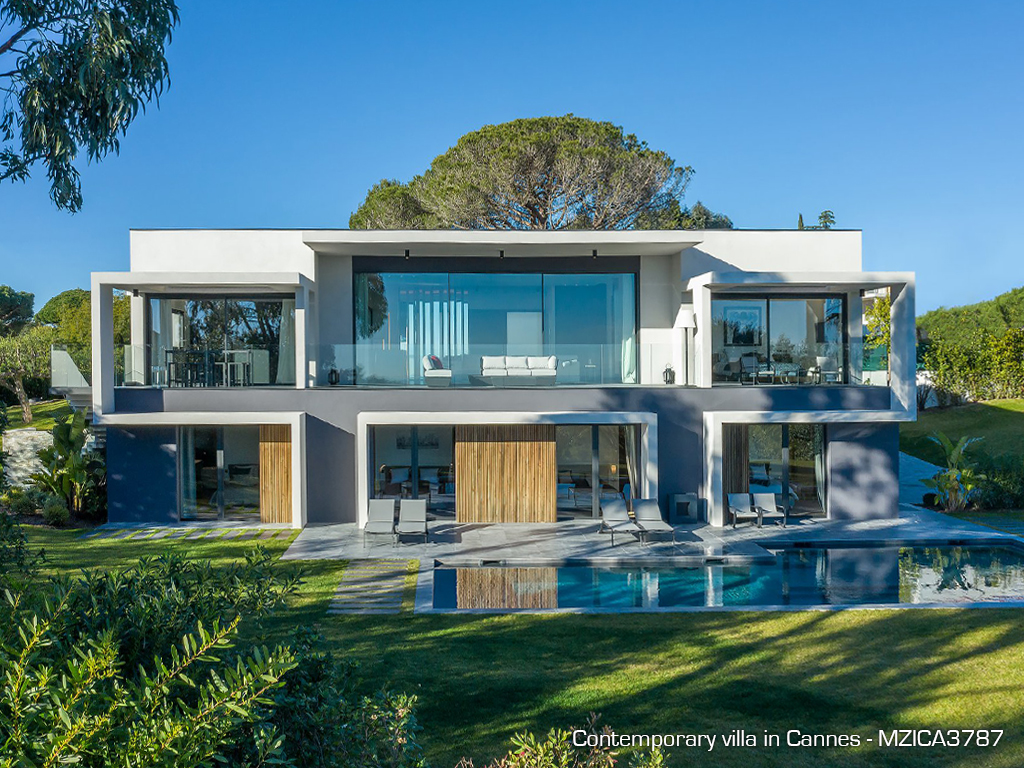
Showing less precise contours than previous architectural movements, contemporary architecture offers a real mosaic of styles. Michaël Zingraf Real Estate specialists have drawn up a list of its main waves, which all stand out from modern art.
What is contemporary architecture?
Unlike modern architecture, contemporary architecture is only rarely considered as an architectural movement in its own right. The term rather encompasses a range of movements wishing to break with the modern style during the second half of the 20th century.
As such, contemporary architecture does not fit in with a specific period: it appeared in the 1960-1970s, at a time when certain architects began questioning modernism, and is still growing nowadays.
Several buildings from the 1960s can be qualified as “contemporary”, despite them not having been built in our day and age. Conversely, even though contemporary architecture defines present-time works, this does not mean that all recent constructions are done in a contemporary style (only those that stand out from modernism can claim this).
What are the main contemporary currents?
The post-modern current
Namely propelled by the architects Robert Venturi and Aldo Rossi, post-modernism developed from the 1970s in Europe and the United States. Seen as a contradiction to a more international style, it favours curved shapes, decorative elements, asymmetric lines, bright colours, humour, irony and reference to past styles (rococo, classicism, neo-classicism). Post-modern buildings are home to original shapes, and their contradicting elements create an explosive result.
Eco-friendly and sustainable architecture
This current labels all constructions whose architecture adopts an environmentally-friendly and ecological approach. Eco-friendly architecture therefore hosts a variety of facets, and varies depending on the surrounding relief, climate, culture, and natural and regional resources. In any case, this current:
- uses natural materials that respect the environment;
- guides construction to ensure energy-saving methods are used;
- favours energy-input methods;
- develops an ecological and responsible living environment.
High-tech architecture
The high-tech movement appeared at the same time as post-modernism. The architects that developed it turned to contemporary technologies as a source of images, shapes and structures. When constructing buildings (high-rises, museums, factories, accommodation, offices), high-tech architecture includes industrial elements boasting cutting-edge technology. Its main features are as follows:
- technical elements are glorified;
- functional components are ostentatiously presented;
- prefabricated elements are used;
- glass is used for the walls and steel for the framework.
Deconstructivism
Deconstructivist architecture started developing from the 1990s. Named like that in reference to the Deconstruction literary movement, this current first and foremost favours the absence of harmony, continuity and symmetry - as a sign of opposition to all traditional architectural forms. In the same way as post-modernism, deconstructivism rejects modern architecture, yet fully assumes its break with history, society and former techniques. Buildings of this style therefore harbour fascinating shapes, that are quite out of the ordinary.
Neo-traditional architecture
Neo-traditional or revivalist architecture uses traditional construction codes, but associates them with modern techniques without changing their visual aspect (unlike new urbanism). Fairly close to the regionalist movement, it includes several currents within the same movement: neo-Haussmann, neo-Gothic, neo-Moorish and neo-Norman.
Michaël Zingraf Real Estate agencies can help you buy exceptional properties on the Côte d'Azur and the Atlantic coast. Discover our online offers and call on the expertise of our professionals to find a rare and prestigious property.



